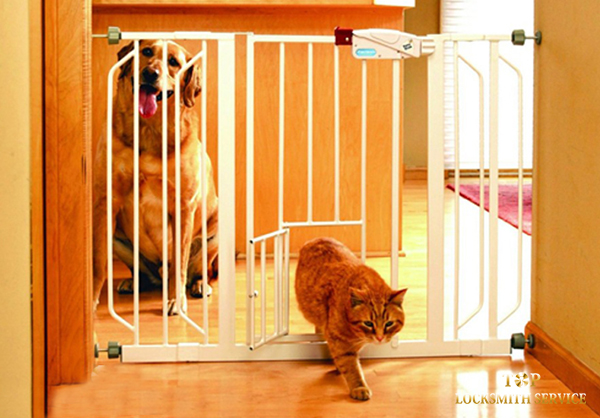Home security doesn’t just relate to humans; it also affects our pets and animal friends. Not only is safety achieved by keeping people from breaking into your home, but it’s also achieved when certain things are kept inside your home. Different animals require different security strategies. In this blog post I’ll detail some of the essential aspects of securing your home for your pets.
Fences
Animals are often plucky and try to push what they are able to do. Depending on what kind of pet you have, they might try to escape with more gumption than others. It’s important to analyze the size and strength of your pet. The distance between any bars of fences needs to be wide enough and narrow enough that the animal can’t simply walk through it. It also needs to be high so that animals can’t jump over it. Horses, for example, can jump over fences. Gaps under fences are also a risk for any turtles, lizards, digging animals, or even cats that can dig or crawl under it. Build up the ground under fences to prevent this from happening. The fence needs to be constructed with the trends and size of your pet in your mind.
Gates
Gates need to be installed by keeping the weight, height, and mind of pets in mind – some pets can even open complicated gates. Pigs have been known to do this. Large animals can bang into gates to try to open them; you’d be surprised how much strength they have. You need to get a strong and sturdy gate with a heavy duty lock – at the proper height, because if it’s too low, pets can go over it.
Animal Carriers and Animal Habitats
These enclosures need to be specifically sized and constructed according to the size and tendencies of your pet. You don’t want your pet to interpret it’s home as a small cage- but when you’re training a pet, using a carrier can be incredibly helpful. Kennels are a great transportation tool for pets while you’re on the road; however they should always be fasted firmly inside moving cars so that it doesn’t get banged around. Habitats are larger spaces for animals where they can run around. They operate as a self contained safe space for animals. You want to fill these with features specific for your pet – it needs toys, heat lamps, food sources, soft surfaces, or anything that you think will make it more comfortable. This provides the stability to ensure that your pet is comfortable and won’t try to run away.
Doggy Doors
If you want to get one of these, you need to make sure that they are large enough for the pet, but small enough that a human can’t get through it. Animals can squeeze – but you don’t want burglars to. If you want to install a doggy door in your front door, make sure to have a double sided deadbolt installed, just in case. Also, make sure to fence off any outdoor areas in your property to help protect your pets.
Leashes
Dogs are legally required to be on leashes when they are in public – they are great methods of training dogs, and allows them to run around and be active while also being safe. All animals can be trained to walk on leashes – even lizards and cats! The handling of the leash has to be done firmly and tenderly, making sure not to hurt the pet. Fabric or metallic leashes work, but fabric is a much better choice, as they are lighter and much less likely to hurt the animal. Contrary to popular belief, tying animals to things to keep them in place is never a good idea.
ID Collars
These are amazing tools. These ensure that if your animal escapes your home that you will be able to recover them somehow. If somebody finds your pet, it’s wearing of an ID collar mitigates the chances of it being put up for adoption or simply kept. Identification can help anyone who finds your pet return them to you, or alert them of any medical needs for the animal. You want to make it as easy as possible for people to return your pet if it does manage to get out of the house. Have your name, and address clearly printed on the Identification collar to help them know exactly where to return it.
